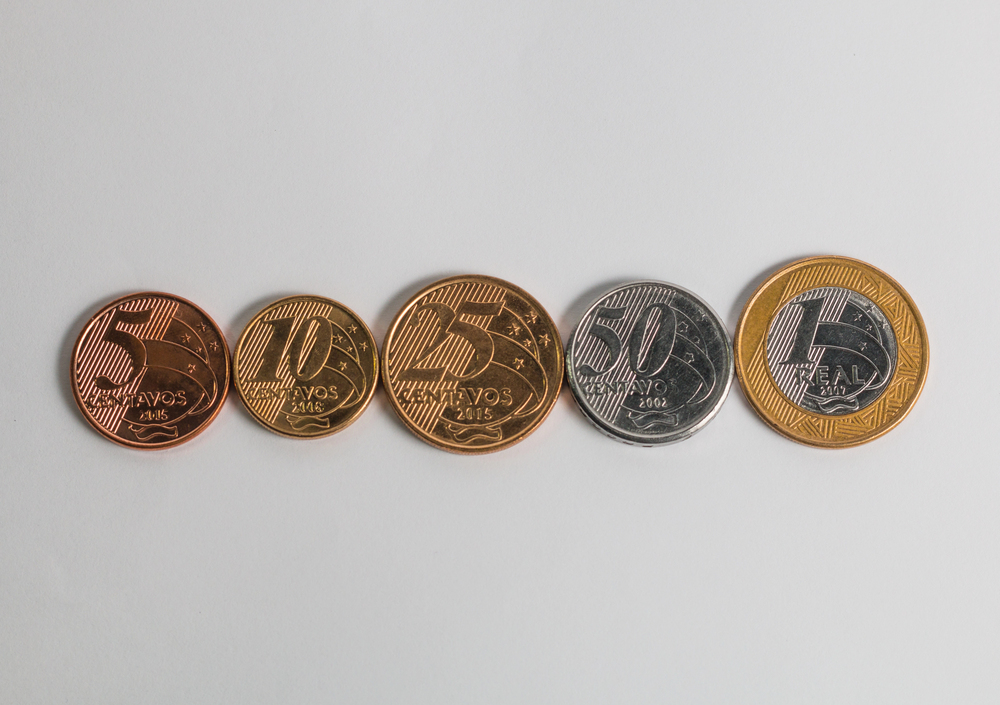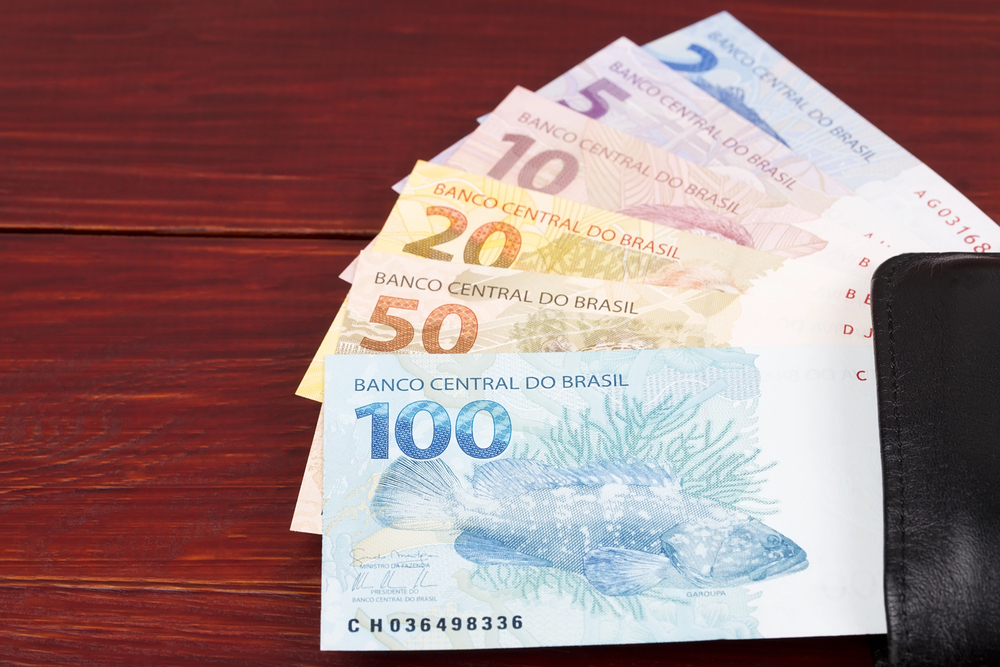Currency in Brazil
The Travel Money Guide to Brazil
Visiting Rio de Janeiro, San Paulo or the Amazon are all great reasons to travel to Brazil. Whether you are going the beaches of Copacabana or to the extravagant Carnaval, a soccer game in Neo Quimica Arena or taking a boat cruise up the mighty Amazon river, Brazil will have you wanting to return.
Part of going to Brazil is getting up to speed on the currency used in Brazil.
The currency that is used in Brazil
Since 1994 the currency used in Brazil is the Real (pronounced ‘Rre-au’). The international code the Brazilian Real is BRL and the symbol R$. Brazil has the strongest currency in Latin America (includes, Mexico, Colombia, Argentina, Chile and 14 other countries in South America).
Money in Brazil
Brazilian banknotes have 6 denominations: R$2, R$5, R$10, R$20, R$50 and R$100. One Brazilian Real consists of 100 ‘Centavos’ (₢). Brazil has 5 coin denominations: ₢ 5, ₢ 10, ₢ 25, ₢ 50 and R$1.
In Brazil, they swap the place of the decimal and the comma. $3,000.75 is written as $3.000,75.


Using Your Bank Card in Brazil
Most Brazilian businesses are well set up to receive card payments. Some of the best travel money cards include debit, credit and prepaid cards. But before you use your bank card willy-nilly, it’s worth reading up on the fees and charges you might incur.
Debit Cards
Debit cards can be used across Brazil. Just beware, your home bank may impose high rates and fees if you use your card overseas. These fees might cover ATM withdrawals, overseas transactions, and currency conversions.
Some cards that offer more competitive rates and lower (or even no) fees include:


Credit Cards
Credit cards can come with some enticing perks, including added security, loyalty programs, and even free travel insurance.
But are they worth it?
Major local businesses, including hotels, restaurants, airline offices, and department stores, accept credit cards. But you might have to pay a surcharge.
Mastercard and Visa are widely accepted. You may also be able to use your American Express card, though local ATMs won’t accept them.
Just be aware of additional charges you may incur for foreign transactions. These could include:
- International transaction fees
- High exchange rate margins
- ATM fees
- Potential ‘cash advance fees’ if you use an ATM
If you still prefer credit cards over any other payment, consider going with a company that offers cards that waive certain travel fees. Bankwest Platinum and 28 Degrees card both have travel-friendly cards.
Prepaid Travel Cards
The biggest advantages of prepaid travel cards are that you can lock in a favourable exchange rate. You also get a handy back-up card.
Just remember that while they are convenient, you could end up paying a long list of hidden fees. Many travel cards still impose:
- Currency conversion fees
- Uncompetitive exchange rates
- International ATM withdrawal fees
- Initial load fees
- Reload fees
- Inactivity fees

How to Buy Brazilian Real Before You Go
There’s a certain reassurance that comes with stepping off the plane (or cruise ship) already cashed up with Brazilian Real.
Buying Brazilian Real before you leave Australian shores isn’t just convenient. It can also save you money. But it all depends on where you get your Brazilian Real in Australia. There are three main options:
- Buy BRL online and have it delivered or collect it in-store
- Buy from a money changer
- Buy at your home airport
Currency exchange offices at Australian airports are notorious for their poor rates and commissions so we recommend avoiding that option entirely.
You’ll easily find a currency exchange (Cambio) near you; even suburban shopping centres should have at least one. But it’s better to get your money from an inner-city store if possible. They have more competition, which is likely to drive their rates down.
If there’s already too much running around to do ahead of your trip, consider ordering Brazilian Real online. You can choose to have them delivered or made available for pick-up at a location near you.
Online orders are often the best value too, especially if you go with S Money, which offers the same rates listed on Google and XE.com.
How to Exchange Currency in Brazil
Places like Rio de Janeiro and São Paulo receive great numbers of tourists, so there are facilities to cater to money exchanges. Beyond these major destinations, it’s best to get cash before you venture into remote territory.

ATMs
In Brazil most ATM’s accept either Mastercard (Cirrus) or Visa (Plus). Banco 24 Horas and Citibank ATMs accept both Mastercard and Visa. While there a lot of ATM’s in Brazil, the maximum withdrawal is $1,000 in most places. Furthermore due to security, most ATM’s are closed between 10pm and 6am each day.
During Carnaval or high tourist seasons, the ATMs run out of cash quickly, so it is best to get there in the morning.
While ATM’s are plentiful in Brazil, you need to proceed with caution. ATM skimming is rife in Brazil, so place your hand over when you are punching in your 4 digit pin code.
Depending on your bank, you may have to pay for overseas ATM withdrawals and currency conversions. To reduce the amount you’ll pay in fees, try to withdraw just the right amount of money you’ll need for the duration of your trip.
Don’t forget: Let your bank know you’re travelling! If they detect a foreign transaction but aren’t aware you’re overseas, they could end up freezing your card.
Currency Exchange in Brazil
There are many currency exchanges (Cambio) in Brazil, but the fees and rates can vary dramatically.
Of the 3 exchange rates offered in Brazil, the rate at the currency exchange counters is the poorest. Airports and hotels are probably going to give you the worst exchange rates, so it’s better to buy your Brazil currency before you leave Australia.
Keep in mind that bureaus in popular tourist destinations, especially around famous landmarks add on high or hidden fees.
Make sure the notes you bring from home are in good nick. Some exchange services reject defaced or damaged banknotes.


Travellers Cheques
Not worth the bother! Travellers cheques are so outdated, very few banks even accept them any more.
They can’t be used as direct payment, so the only way to use them once you’re in the country is to swap them for currency at a bank or currency exchange store. Even then, very few banks will accept travellers cheques if you don’t have an account with them. And exchange services apply exorbitant fees and rates to them.


